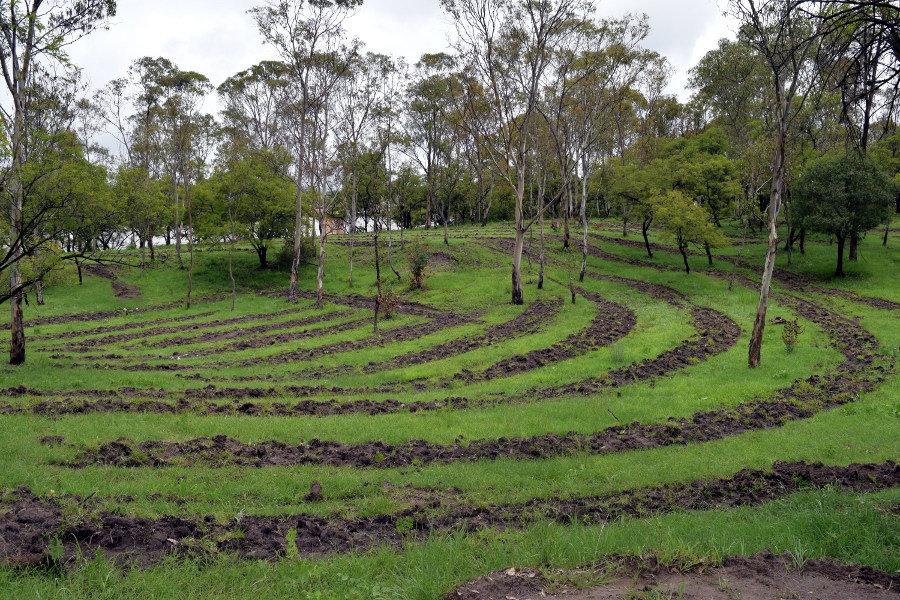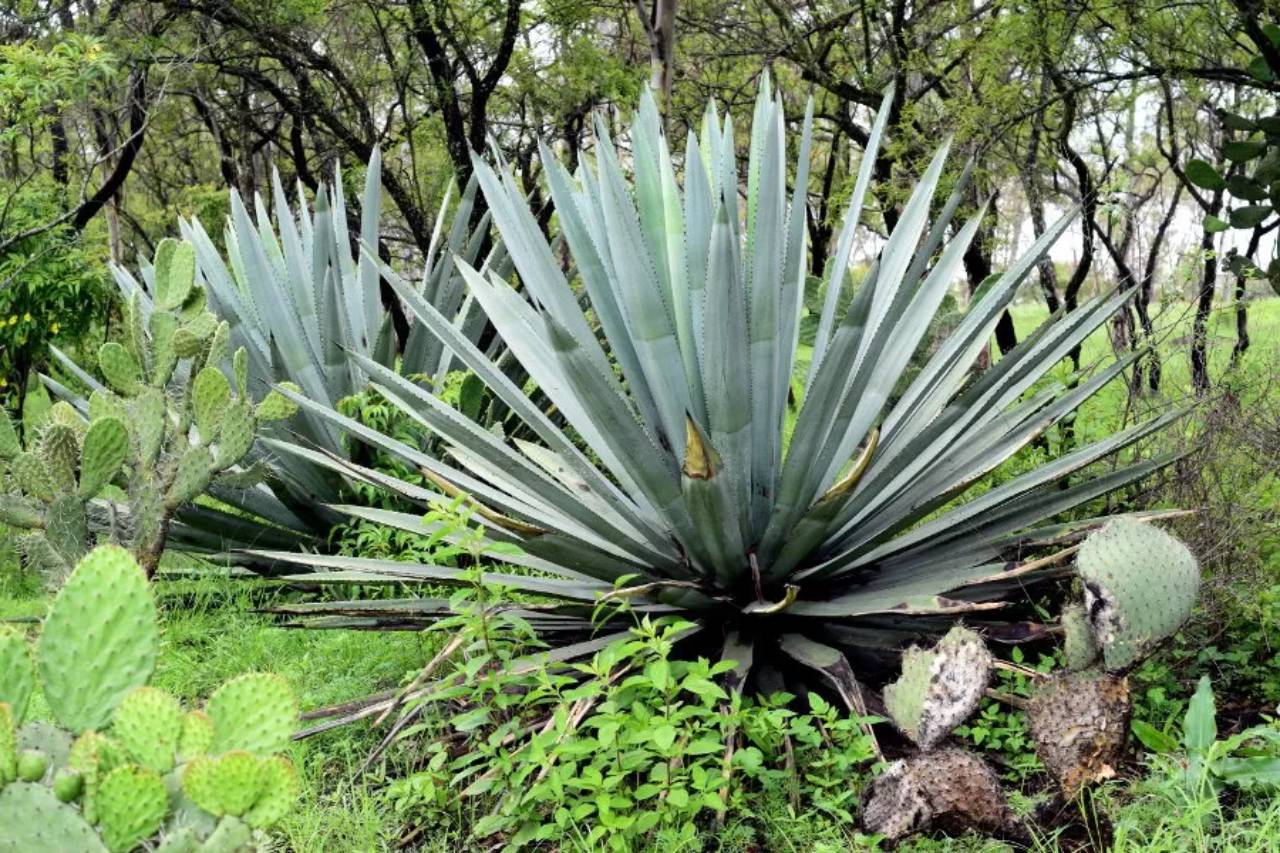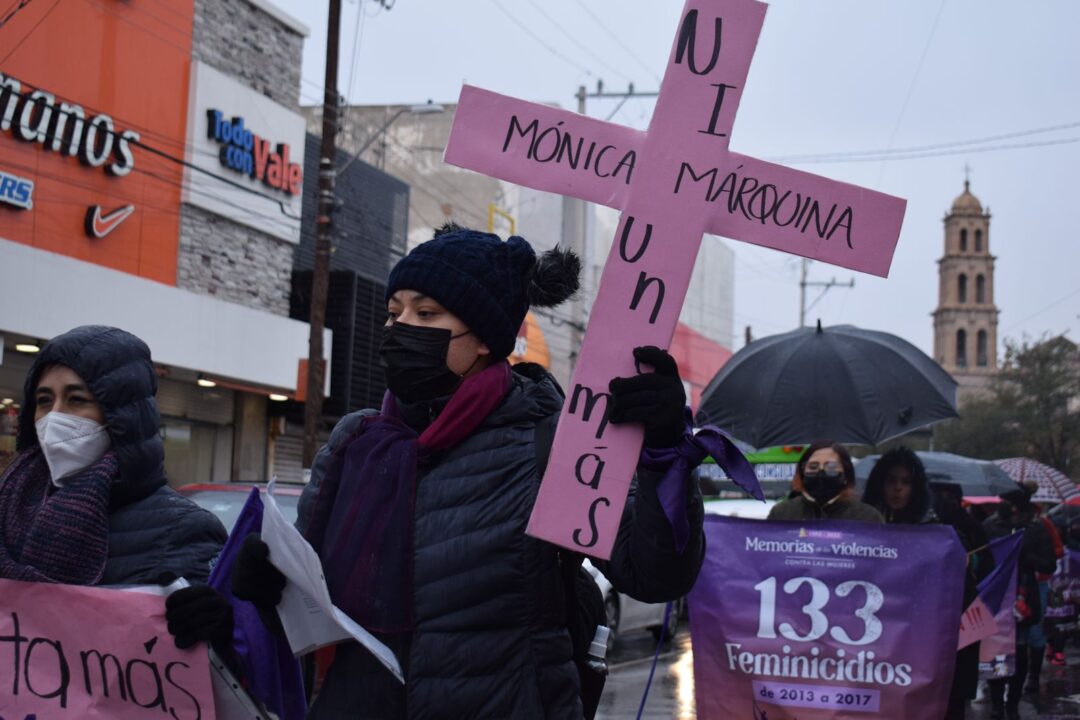The Mezcal boom has put some species of agave in danger; in Puebla, which can now issue certificates of origin for mezcal produced in the state, there is a push to reconsider the way agaves are planted and cared for.
Text by Aranzazú Ayala Martínez, originally published by Lado B on July 22, 2021.
Translation by Dawn Marie Paley.Rosana tramps through muddy ditches until she hits upon an enormous agave, in the corner of a lot alongside the highway that connects Puebla with the municipality of Tecali de Herrera. It’s an agave potatorum, a species of agave from which the famous tobalá or papalometl mezcal is made. These mezcales are also produced in Puebla. Though the existence of wild species of tobalá have been endangered by the mezcal boom, there are those working to save them, like Rosana Estrada, a biologist with the Niyoli association, which is dedicated to the sustainable management of natural resources.
Since 2015, Puebla has been certified as a place of origin for the ancestral spirit, and the rise in demand for the drink has led to the overuse of agaves grown for Mezcal. That is why wild agaves were used for mezcal production (they grow naturally, which is to say, they are not bred by humans for the purpose of making mezcal). This overuse has put them in danger. But there is a solution.
In a private lot in the Sierra del Tenzo region, which is about half an hour by car from the city of Puebla, near the Valsequillo dam, Rosana and her colleagues have started working on a new way of planting agaves.
What Niyoli does is assist producers in keeping the seeds and reproducing the agaves, they also teach planting techniques to avoid soil erosion, and help with implementation of holistic agro-forestry management (including of tree species used for wood) to look after the trees whose wood is used to cook the fruit of the agave plants.The biologist told LADO B that most species of agave reproduce via small suckers, which is to say, little plants which the main plant creates, and which begin to grow around it.

Few agaves reproduce from seed: most grow a mast (called a quiote), which is a long and thin trunk, from the center of the plant, and there, among a bundle of pods, are the seeds that fall to the earth.
Normally, to make mezcal, the mast is cut down to the level of the plant, so that all of the plant’s energy is going into growing the fruit in the middle of the agave. This impedes reproduction.
The proposal of Rosana and her team, who make presentations in rural assemblies in ejidos and communities, is to create conservation areas inside the places where mezcal is grown.
The preservation efforts are focussed, above all, on the species that are more difficult to grow: those that grow from seeds and not suckers. There is ongoing work involved in selecting the seeds that will be reproduced: variables like the form of the plant, its height, width, and the Degrees Brix, used to measure the sugar content of the plant, are all taken into account.
“This is what we do to ensure the best selection among mature plants that are old enough, which means they are ready to produce their rosette,” she said.
Another technique they use is planting horizontally, not vertically down slopes. This helps avoid mudslides and soil erosion, helping with the retention of water and the solidity of the earth.

In the lot where Rosana is working, for example, the trees that were already planted in the area were respected, according to an agroforestry system. This means that the agricultural work (in this case, the planting of agaves for mezcal) is connected to the forestry (the conservation of the trees that are already in the soil. This helps to ensure more water is retained in the soil.
Social organization for agave health
Today, Puebla is the state in Mexico with the second largest amount of mezcal production. This means more and more agaves are required, and more people are entering into the business.
In response to increasing demand for mezcal, initiatives to rescue varieties of native agaves (which is to say, those that are endemic to Puebla and only exist here) as well as wild agaves, have come from producers and farmers in the area.

Among the organizations that exist in Puebla is the Union of Men and Women of Mezcal Maguey Puebla, which is currently led by Luciano Arriaga. Their members are dedicated to protecting and preserving seeds, and learning sustainable management of agave crops.
In an interview with LADO B, Arriaga said there are more organizations that bring producers together, and that they are trying to face the problem of saving the agaves that are used for mezcal.
The panorama is worrying, but not hopeless. The demand for mezcal (and not just mezcal from Puebla) has surpassed the production and the quantity of agaves that are planted, and that has caused a response from producers.
For example, the Union has a strategic plan for the preservation and reproduction of wild and endemic agaves. Luciano said they have seen how agave growers are collecting seeds in many municipalities.
“The idea is to do a full recuperation… in a non-predatory way, which allows the endemic species from Puebla to prosper in a responsible manner, and not to just see it as a business, but rather to see the ecological side,” he said.
Other endemic species of agaves used for mezcal are the Agave Rhodacantha, or Mexicano, and the Agave Karwinskii. Luciano menciones that so far they have documented 18 in the entire state of Puebla.
“We’ve found different species in zones where they hadn’t been found before, the key thing is to work on selection, which can help ensure we get the greatest quantity of seeds.”
The government of Puebla has started working on a law to protect agaves used for Mezcal in the state, and while the road forward is long, the people whose life is devoted to creating this ancestral spirit are taking immediate steps to rescue the agave plant.
This report was originally published by LADO B web, which is part of the Media Alliance organized by Red de Periodistas de a Pie. You can read the original here.
Click here to sign up for Pie de Página’s bi-weekly English newsletter.
Ayúdanos a sostener un periodismo ético y responsable, que sirva para construir mejores sociedades. Patrocina una historia y forma parte de nuestra comunidad.
Dona


















